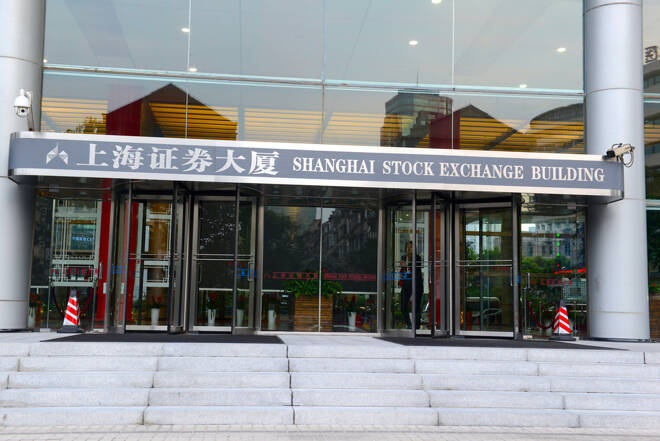Advertisement
Advertisement
Asian Shares Mostly Lower, but Chinese Stocks Soar Amid Upbeat Industrial Output, Retail Sales Reports
By:
The reaction in the markets to the trade deal news has been mixed with many analysts advising caution. Some critics noted several shortcomings in the trade deal that was announced between the world’s two largest economies on Friday. Growth in China’s industrial and retail sectors beat expectations in November, as government support propped up demand in the world’s second-largest economy and amid easing trade hostilities with Washington.
The major Asia Pacific shares are mostly lower on Monday with China bucking the trend in a big way. Stocks in the second largest global economy were underpinned early by news of the trade deal between the United States and China on Friday, but shares jumped on Monday afternoon following the release of data that showed the country’s industrial output and retail sales rose more than expected in November.
At 07:36 GMT, Japan’s Nikkei 225 Index was trading 23952.35, down 70.75 or -0.29%. Hong Kong’s Hang Seng Index was at 27592.77, down 94.99 or -0.34% and South Korea’s KOSPI Index was trading 2168.15, down 2.10 or -0.10%.
Australia’s S&P/ASX 200 Index closed at 6849.70, up 110.00 or +1.63% and China’s Shanghai Index was trading 2984.39, up 16.72 or +0.56%.
Investors Question Details of Trade Deal
U.S. and Chinese officials announced on Friday that the two economic powerhouses had reached a phase one agreement after a combative 18-month trade war. The details are a little sketchy, but it looks as if China agreed to billions of dollars in agricultural purchases from the U.S., while U.S. President Trump vowed to not pursue a new round of tariffs that had been scheduled for Sunday. The two major economies plan to sign the partial accord in the first week of January.
U.S. Trade Representative Robert Lighthizer said on Sunday that the phase one U.S.-China trade deal reached on Friday is “totally done,” and it will nearly double U.S. exports to China over the next two years.
The reaction in the markets to the trade deal news has been mixed with many analysts advising caution. Some critics noted several shortcomings in the trade deal that was announced between the world’s two largest economies on Friday. Top among them were a lack of specifics on farm purchase commitments and enforcement mechanisms, a shortage of trust on both sides and U.S. President Donald Trump’s mercurial negotiating style.
China’s Factory, Retail Sectors Shine as Trade Tensions Thaw
Growth in China’s industrial and retail sectors beat expectations in November, as government support propped up demand in the world’s second-largest economy and amid easing trade hostilities with Washington.
Industrial Production rose 6.2% year-on-year in November, data from the National Bureau of Statistics showed, beating the median forecast of 5.0% growth in a Reuters poll and quickening from 4.7% in October. It was also the fastest year-on-year growth in five months.
Retail sales rose 8.0% year-on-year in November, compared with an expected 7.6%, buoyed by stimulus measures and the November Singles Day shopping extravaganza, the statistics bureau said.
Fixed Asset Investment showed few signs of improvement, growing 5.2% from January-November, in line with the increase seen in the first 10 months, which was the weakest in decades.
Infrastructure investment growth, a key driver of activity, slowed to 4.0% in January-November in the first 10 months.
About the Author
James Hyerczykauthor
James Hyerczyk is a U.S. based seasoned technical analyst and educator with over 40 years of experience in market analysis and trading, specializing in chart patterns and price movement. He is the author of two books on technical analysis and has a background in both futures and stock markets.
Advertisement
